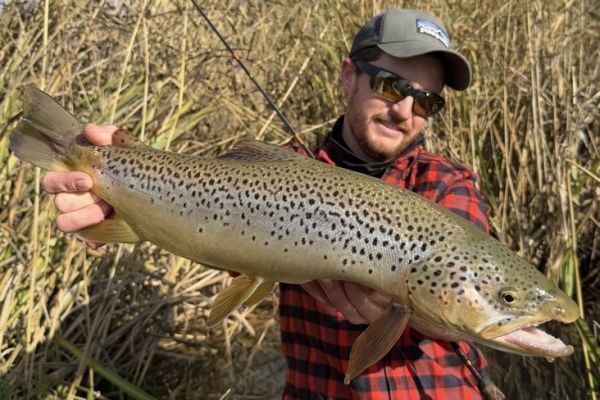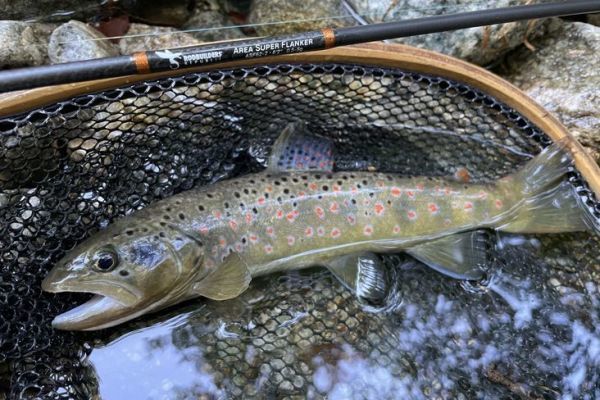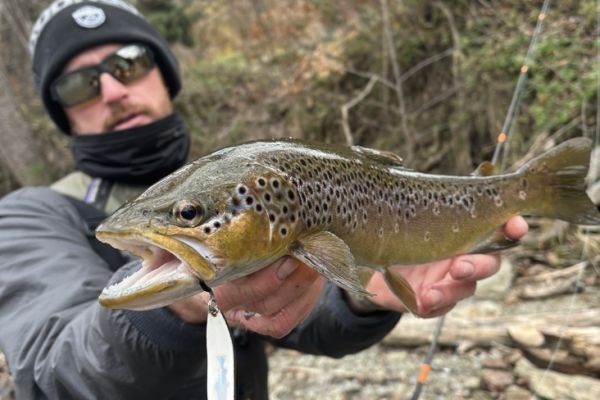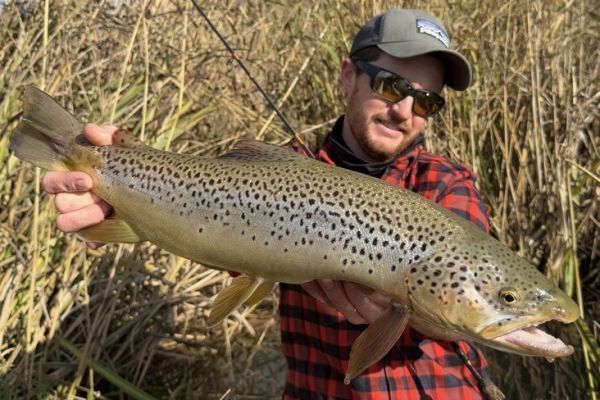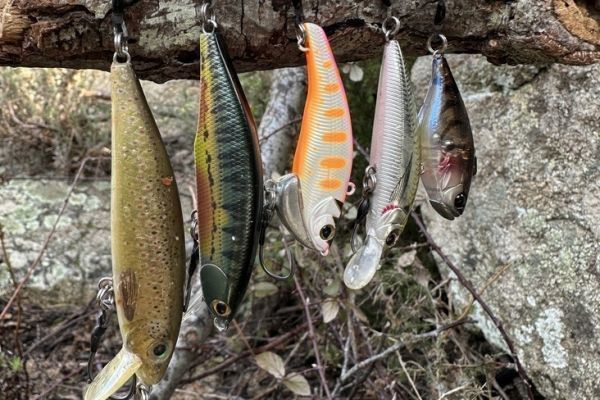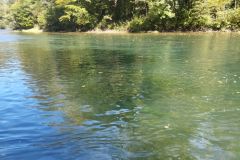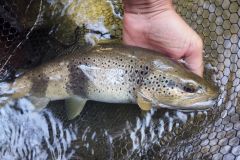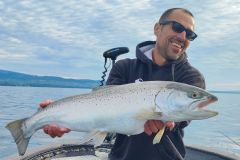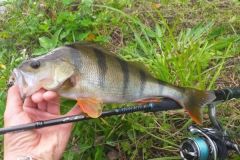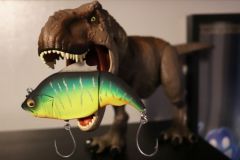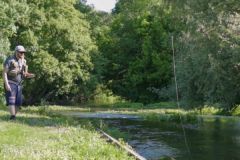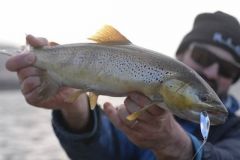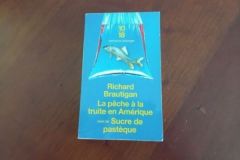While spinners and wobblers are classics for trout fishing, soft lures offer a different, often more discreet approach to wary trout.
The different types of soft lures for trout
At the start of the season, and especially at opening time, the water is generally cold and it's essential to have a few soft lures on hand, to be presented gently over the bottom when the trout, not very active, are concentrated in this last layer of water.
Unlike spoons, which play on vibrations and reflections, soft lures are more natural and imitative. They resemble the natural prey of trout, such as fry, minnows, worms and larvae. There are several types of soft lures that are effective for trout fishing:
- Shads, which imitate a fish and have a paddle that allows them to swim when retrieved while emitting vibrations, making them identifiable from quite a distance.
- Finess, also designed to imitate fish, but without a paddle, for a more discreet approach and much more precise animations.
- Grubs have a curved tail that spins like a spoon.
- Worms and other creatures resembling worms or various underwater or terrestrial insects, really playing on the natural and highly imitative side.
In most cases, these lures are mounted on lead heads whose weight, shape and hook length will depend on the lure, depth and desired animation.
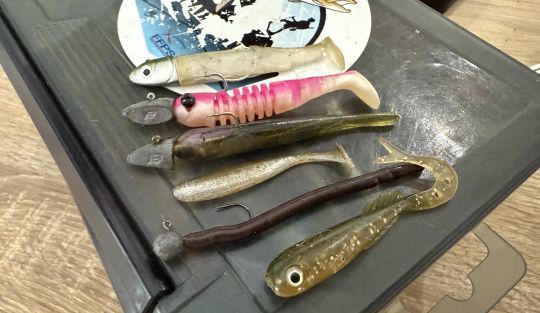
The different lure assemblies and animations for trout fishing
Shads and grubs are generally mounted on classic round lead heads, with the hook protruding at about the level of the first third of the lure, allowing maximum swimming amplitude. The shape of the head is then dedicated to simple animations like the linear, with pauses to allow the lure to regain contact with the bottom from time to time.
Finess lures can be fitted with sharper heads, even triangular ones, which give them a very erratic swimming action during animation, imitating a wounded fish! This technique, using very imitative lures, delivers excellent results, especially on large, wary fish! The animation consists in casting, making contact with the bottom, then retrieving slowly with short strokes of the scions, making the lure twirl from left to right.
When it comes to worm, larva and insect imitations, you can mount them on very small lead heads to remain very discreet and gliding, or mount them only on a hook, with a few sinkers to pinch on top as for toc fishing, a very effective set-up in small streams in particular.
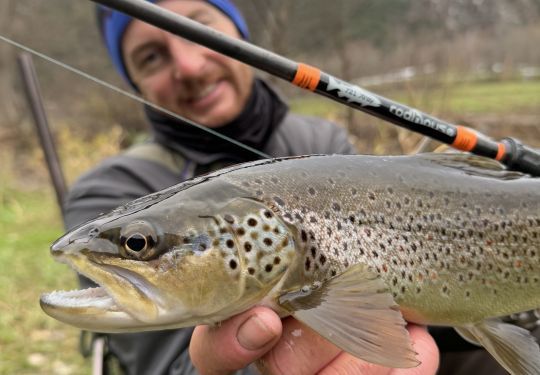
Equipment for trout fishing with soft lures
Fishing with soft lures is a particularly tactile sport, requiring a highly resonant rod that lets you feel the bottom so you can imagine your lure moving over it! A fast-action rod is also important, both for precise animation and to be responsive to the strike! For the same reasons, the use of braid is almost compulsory, except for stream fishing with worm imitations where nylon can be an ally to give a minimum of elasticity to the rig, thus allowing fewer trout to be unhooked!
3 good reasons to fish with soft lures at the opening
-
Cost:
Like all enchanting passions, fishing is an expensive sport, and trout lure enthusiasts are well aware of this: swimming fish, for example, can quickly reach prices of between ?15 and over ?30 each. The advantage of soft lures is that their simpler design makes them much more affordable, so you can have a variety of colors, sizes and shapes for a smaller budget. This affordability also means that anglers are less reluctant to scrape certain spots with soft lures, with less apprehension of losing them, which sometimes offers a few extra fish!
-
Standing out:
Spoons of all kinds and swimming fish are lures found in every trout angler's tackle box, while fewer anglers are equipped with soft lures! As the opening is a period when fishing pressure is quite high, it's worth setting yourself apart from other anglers, especially when targeting big fish who are sometimes educated and less likely to react to lures they've seen many times before, and which always offer similar vibrations and looks!
-
Cold water:
At the start of the season, the water is fairly cold, hatchlings are almost non-existent, and trout are not always very active below the surface! The big advantage of the soft lure lies in the fact that it can be animated very slowly above the bottom, just by adapting the weight to the spot and the size of the lure, something more difficult with a spinning spoon or a swimming fish, for example!
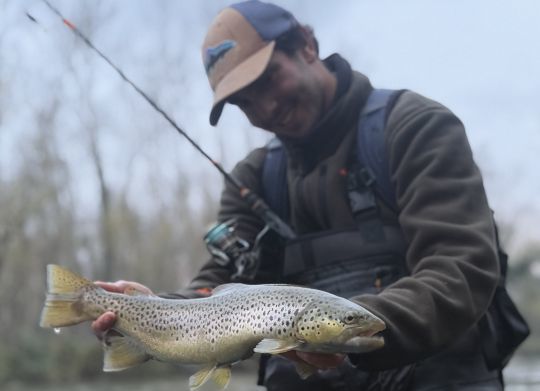

 /
/ 